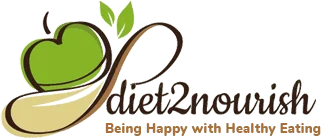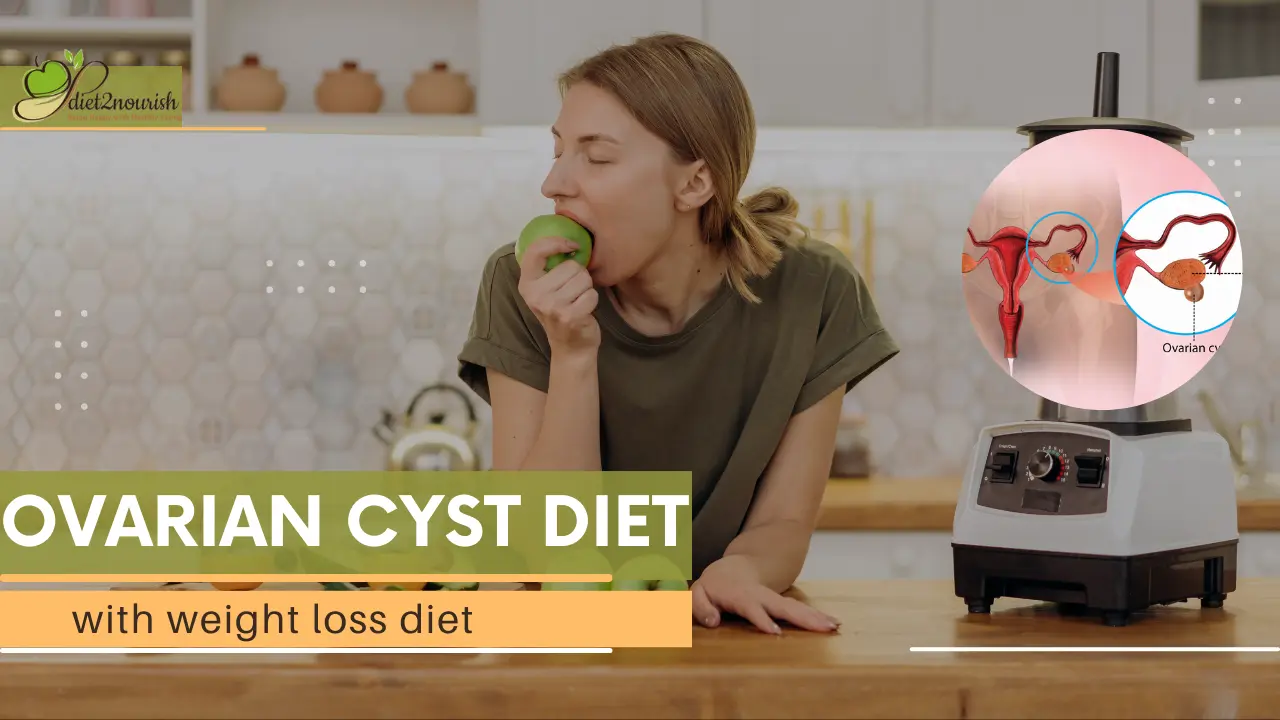Ovarian Cyst Diet Chart
The best ovarian cyst diet chart is here for you. It can save your ovaries from cysts.
Due to many reasons, this has become a common issue. But don’t take any chances ignoring it. It can lead to many issues like infertility. Follow the best ovarian cyst diet chart to get well soon.
All about ovarian cyst:
An ovarian cyst is an unwanted part. This can be a solid or a fluid-filled sac. It occurs within the ovary. Sometimes, on its surface. Moreover, this is a very common problem. You can get rid of them with a diet plan.
Causes:
Every woman has her own cause of cysts. A few of them are:
Atypical cell reproduction
Cysts can also form due to abnormal cell reproduction.
Pelvic infections
Pelvic infection can spread to the ovaries. This can cause cysts.
Endometriosis
This condition can lead to ovaries. Here, tissues grow outside the uterus and can Be very painful.
What to eat in an ovarian cyst diet chart?
You become what you eat. This is a very wise quote. When you eat healthy, your body including ovaries will be healthy. Get to know all about this below:
Best food items for ovarian cysts
Ovarian cysts come with many health issues. To deal with them all, you must eat the best foods for cysts and they are:
Fibre-rich foods
Foods that have fibre can prevent the reabsorption of oestrogen. It is because of phytochemicals in them. This can help you with cysts.
So, your ovarian cyst diet plan must have these foods:
- Fruits
- Vegetables
- Lentils
Omega-3 from foods
Cysts can cause hormonal changes in women. These foods can help you with this. So, you can eat:
- Fish
- Nuts
- Seeds
Magnesium-rich foods
Ovarian cysts come with cramps. To deal with it, you must eat foods that give you magnesium. They can help you with cramps. So, eat:
- Cashews
- almonds
- bananas
- green leafy vegetables
Foods containing I3C
I3C refers to indole-3-carbinol. Foods rich in I3C promote the release of oestrogen in the body. Moreover, these foods remove the excess hormones. This helps in creating a balance.
To get this, you must eat:
- Sprouts
- broccoli
- cabbage
- cauliflower
Worst food items for ovarian cysts
To get rid of cysts, you need to avoid these foods:
Sugar rich foods
This category includes processed juices, cakes, pastries, cookies, and other sweets. They are each in refined sugar and cause hormonal imbalance. This leads to cysts in the ovary.
Saturated fats
Say no to Foods with saturated fats. These foods are:
- ghee
- butter
- cheese
- lamb
- mutton
- Hog
Vegetable oils and food fried in them
Refined vegetable oils can mess up your hormone level. So, don’t eat such food items. They will make your cysts worse.
Vegetables that should be included in an ovarian cyst diet chart
- green leafy vegetables
- Cabbage
- Eggplant
- Carrots
- Sweet potatoes
Fruits that should be included in an ovarian cyst diet chart
- Oranges
- Guavas
- Papaya
- Pear
- Apricots
Dos and don’ts for an ovarian cyst diet chart:
With an ovarian cyst diet chart, you must get some tips. Here are some dos and don’ts that can help you get fast results:
Dos for ovarian cysts
Apple cider vinegar
As per studies, ACV is good for cysts. It can reduce the size of ovarian cysts. Therefore, you must drink it daily. You can even have it in the morning.
Herbal tea
You can drink chamomile tea for best results. It can help with cysts in the ovary. Moreover, its soothing effects ease up the pain.
Ginger tea is also taken to reduce inflammation. Herbal teas do not have any side effects and must be included.
Lemon juice
Consumption of lemon juice helps in ovarian cysts and tumours. Furthermore, Lemon has citric acid which makes it useful in this condition.
Pomegranate juice
This juice can help your hormones. Moreover, it can help the complications caused by cysts in ovaries. Thus, you must drink it daily.
Don’ts for an ovarian cyst
The following food items are a big NO-NO for an ovarian cyst diet chart. So, try avoiding them.
Caffeinated drinks
You must avoid such drinks if you have cysts. They cause the growth of cysts. So avoid teas and coffees.
Alcohol
Alcohol can mess up with the hormones in the body. It can make your issue worse. In case of cysts, you should avoid such drinks.
Carbohydrates
Carbs can raise your sugar levels. They can lead to the growth of ovarian cysts. So, avoid such foods. These food items
- White rice
- potatoes
- maize
- pasta
A seven day ovarian cyst diet chart
Say bye-bye to your struggles with ovarian, cysts and related problems. Ease up your symptoms by following the seven day ovarian cyst diet chart:
DAY 1
breakfast
- Broken wheat porridge also known as dalia
- It can be topped with two to three finely cut strawberries
- A cup of any herbal tea or green tea
Lunch
- Plain chapati with mixed vegetable
- A fruit like 100 gms of papaya can complete the lunch
Evening snacks
- Sprout salad of mixed dals with lemon squeezed in it
- With 200 ml of pomegranate juice
Dinner
- Plain chapati with any vegetable that is good for ovarian cysts
- These veggies include beans, cauliflower, broccoli, peas, lettuce, kale, collared greens etc
DAY 2
Breakfast
- Oatmeal cereal made in low fat milk
- It is followed by a glass of amla juice
Lunch
- Plain chapati with sprouts tossed in olive oil
- Followed by consumption of is an orange or a tangerine
Evening snack
- Mixed Vegetable soup
Dinner
- Ragi chapati with any dal
- This is accompanied by a small bowl of salad with minimal salt
DAY 3
Breakfast
- Veg semolina in the form of upma
- It is accompanied by a glass of Coconut water
Lunch
- Nutri nuggets can be consumed with two to three plain chapatis
- One medium sized banana
Evening snack
- A big bowl of Rice flakes snacks
- Some low fat yoghurts
Dinner
- Grilled fish with celery and coriander
- It is consumed with a brown bread
- Some herbal tea before bed
DAY 4
Breakfast
- One big bowl of Veg poha with some salt
- This is consumed with a glass of low-fat milk
Lunch
- Boiled sweet potatoes seasoned with salt, oregano and chilli flakes
- Consumed with two sliced of plain bread or plain roti
Evening snack
- Roasted Flax seeds
- Pumpkin seeds
- Raisins
Dinner
- One cup cooked Soya beans with three chapatis
- Around 100 gms strawberries
● DAY 5
Breakfast
- Vermicelli also known as seviyan cooked in low fat milk
- One glass of Aloe Vera juice
Lunch
- Well cooked Broccoli with one chapati
- Any dal with one cup of brown rice
Evening snacks
- Egg white portions of two to three eggs
- It can be seasoned with some oregano and salt
Dinner
- Lady Finger or okra cooked in soybean oil
- Add two ragi rotis to it
- The platter can be completed with the addition of two cups of boiled green beans
● DAY 6
Breakfast
- A cup of oats boiled in moderate amount of water
- Addition of 1 cup low fat milk to it
- This can be topped with blueberries if required
Lunch
- One of bowl of rajma or any dal
- Consumed with well cooked brown rice
- Some celery leaves will complete the lunch
Evening snack
- Banana chips
- Six pieces of some soaked almonds
- A glass of coconut water
Dinner
- A cup of chopped lettuce,celery with some lemon juice squeezed to it. The salt is added to taste.
- This can be consumed with 100 ml soya milk or almond milk
● DAY 7
Breakfast
- a fruit salad of Apple, Pear and orange
- This is accompanied by 150 ml aloe Vera juice
Lunch
- Boiled chicken with two slices or whole wheat brown bread
- It is consumed with some pomegranate juice
Evening snack
- Two cups of Boiled nutri chunks seasoned with salt, pepper, oregano and some chilli
Dinner
- A salad of approximately 2.5 ounces of boiled chicken with a cup of lettuce, four cucumber slices and a half cup of black beans
- The dinner can be completed with a medium sized apricot
The bottom line
Ovarian cysts is a common but painful health issue. It comes with a cluster of symptoms. All of them are hard to deal with. With the help of an ovarian cyst diet chart, you got this!
So, you should eat healthy foods in your diet. You should also do exercises. It will help you have a healthy weight. Your weight is linked with the chances of getting cysts.
Frequently asked questions (FAQs)
What is the size of an ovarian cyst?
The size is variable. It can range from an inch to four inches. However, a cyst greater than five centimetres is considered threatening.
Cysts of smaller sizes usually disappear on their own.Can cysts come back after treatment?
The same ovarian cysts do not come back. You can do home remedies. Having a diet chart for ovarian cysts can help you. If it does then it means that the previous test was not resolved.
What kind of diet is bad for ovarian cyst?
A bad diet can cause cysts. If your sugar intake is high, you are at risk. Your diet must be healthy. It should not have foods that do not have any fibre. Fats play an important role. So, make sure your diet does not have bad fats.
Can weight loss help reduce the risk of ovarian cysts?
A healthy weight is a vital factor. You must be in normal range to be free from health issues. Ovarian cysts are related with weight. So if you are overweight, then weight loss is crucial.

